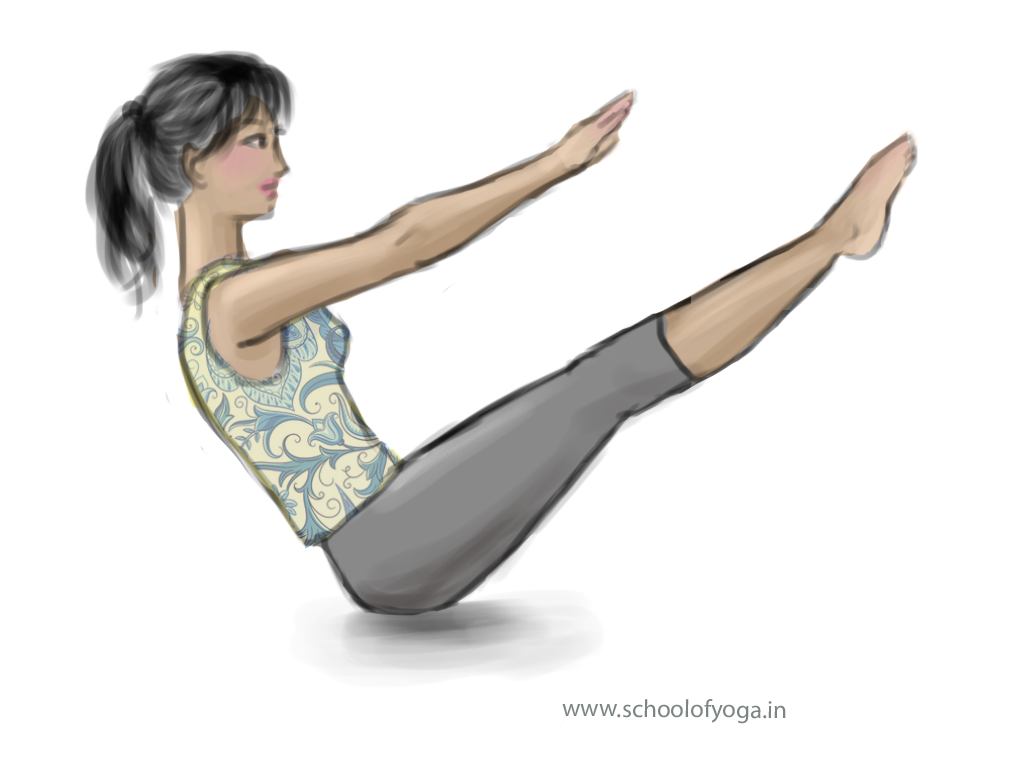School of Yoga explains naukasana (Boat Pose)

Naukasana technique:
- Sthithi (starting) position: Sit on the floor with legs stretched out ahead.
- Place hands, palm down, next to the thigh. Breathe in.
- Breathing out, bend the torso forward, using the hands and abdominal muscles, lift legs up as far as possible.
- When legs are steady, remove hands from the side and stretch it toward toes.
- Keep legs straight
- Keep eyes, thumbs and toes in a straight line.
- Balance body on buttocks. maintain shallow breathing.
- Hold of 5 counts. Increase to 30.
- Breathing in, slowly come back to sthithi (starting) position. Repeat 3-5 times.
- The drishti (gaze) recommended is padayogre-drishti (tip of the toe gaze).
Naukasana benefits
- This asana is excellent for removal of adipose tissue around the abdomen.
- Also, downward pressure of the abdomen on the colon sets up peristalsis and cures constipation.
- The upward movement of the torso and legs increases muscle tension on all elements of the muscles of the upper and lower back.
- The thigh, hamstring and calf muscles get strengthened on account of the forced leg stretching action which is required to keep the leg up.
- This asana rejuvenates cartilages and muscles in the spine as well as the sympathetic and parasympathetic nervous system.
- Menstruation related issues are resolved by this asana.
- This asana is good for increasing sense of balance.
Naukasana contraindications
- Do not perform this asana if you are suffering from lower back problems and hernia.
- If you have blood pressure, consult a doctor before practicing naukasana.
- Do not perform this asana during menstruation or pregnancy.
Some noteworthy points on Naukasana :
Internal Links: Dharma (conditioning), Stress and Situational Awareness, Prana, Asana overview 1, Asana Overview 2, Asana Focus or gazing, Pranayama, Paschimotanasana
External Links: Prana, Chakra, Pancha Tattva, Pancha Prana, Pancha Kosha, Nadi
- Do not do this exercise if in case of high BP, cervical spondylitis, hernia or renal disease etc.
- Do not relax abdomen. It can cause the walls to collapse and tearing of the inguinal hernia.
- Do not take hands back as in paschimotanasana to use the momentum of the forward hand movement to lift torso. A sudden jerk could result in stomach cramps.
- Keep knees together and legs straight for maximum benefit.
- The subsidiary benefits are increased flexibility of the ankles, knees, hips and lower back.